by yaska77
How did this happen? One minute we were lauding the approach of Spring and a few sleeps later it’s December. The year has gone all too rapidly for my liking. My telescope must truly think I’ve abandoned it!
But, it may get used sooner than it thinks. At the time of writing, comet ISON had just been killed by the intense heat and forces around the Sun, after reaching its closest point of pass (perihelion) on 28th November. But then like some galactic zombie it was suddenly back. Still unsure what has actually survived, scientists who previously called the death are now confirming something has endured the close encounter with our Sun.
After disappearing from view, much to the lament of astronomers worldwide, suddenly there was a hint of a tail emerging in the images obtained by probes close to the Sun. Then, it started getting brighter…
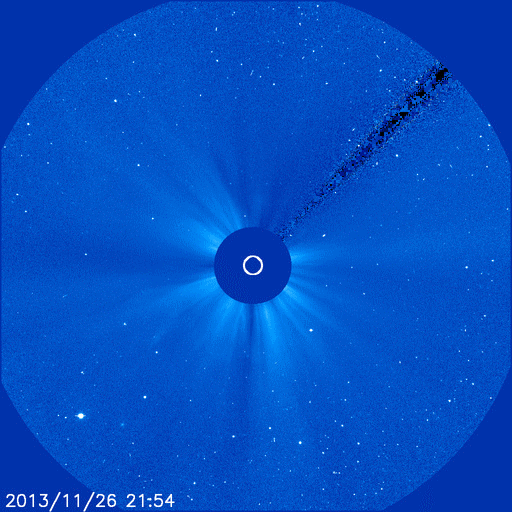
Scientists have been quick to suggest this could just be the death throes of the comet, but over the next couple of days we’ll know whether we’ll get some sort of show over the coming weeks! With that and all the other astral activities we’ve noted below, there certainly is a lot to get outside for!
Keep watching the skies!
Tuesday 3rd December – The New Moon rises with (and sets just after) the Sun today, so now is a good time to observe deep sky objects when the skies are unaffected by moonlight
With Orion back this time of year it’s always worth seeking out the Orion Nebula (M42). We’ve imaged this a couple of times and would love another photo-shoot!

Wednesday 4th December – The Moon is at Perigee today at a distance of 360,065 km (223,734 miles), the closest point of its orbit to the Earth
Thursday 5th December – If C/2012 S1 (ISON) has survived, this morning might be a good time to try and spot it. Shown below at 06:30 UTC, ISON should be fairly easy to locate so it’s a good chance to get a look through binoculars or a telescope

Monday 9th December – This evening the Moon is seen at First Quarter phase
Tuesday 10th December – Planet Venus attains greatest brilliancy today (mag -4.7) so look for it low down to the SSW just after sunset
And should comet ISON still survive, you can see in the image below how far it’s traveled since our spotter’s guide on the 5th!
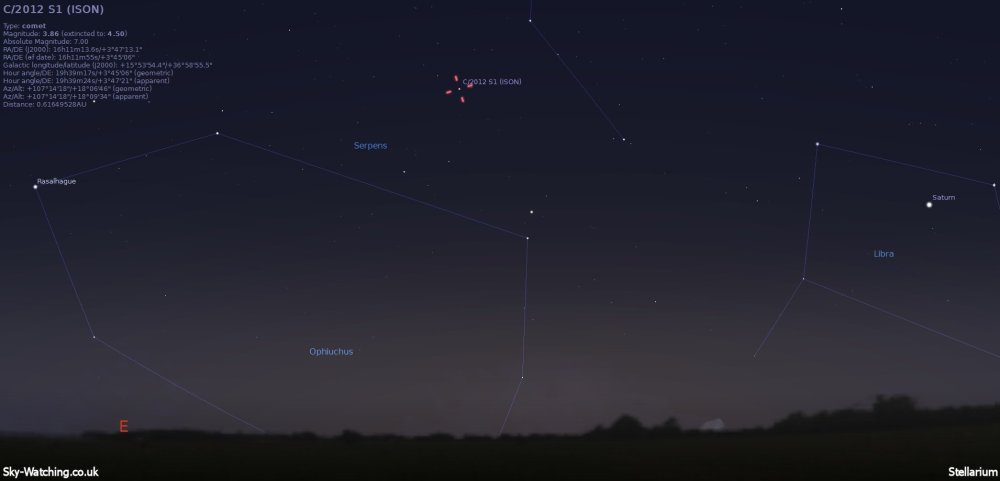
Sunday 15th December – In a new feature, below we’ve provided constellation guides for southern and northern skies in December
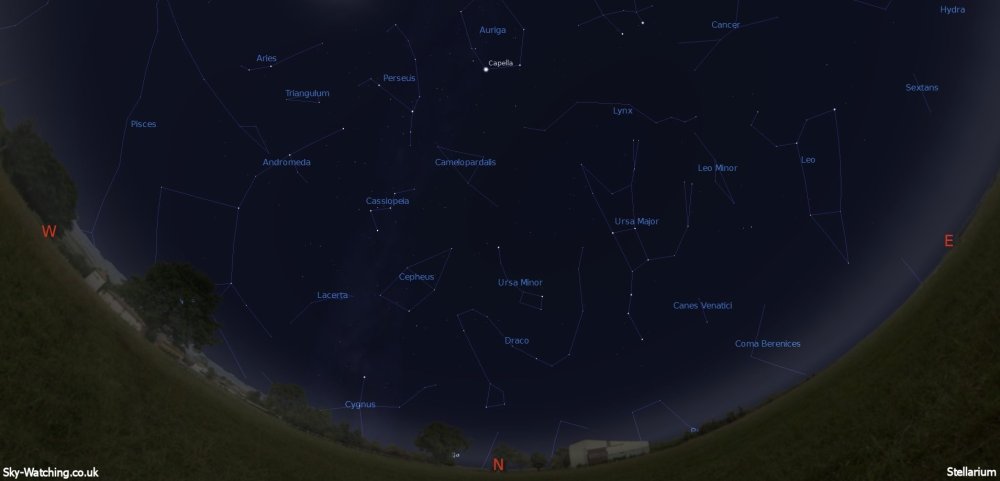
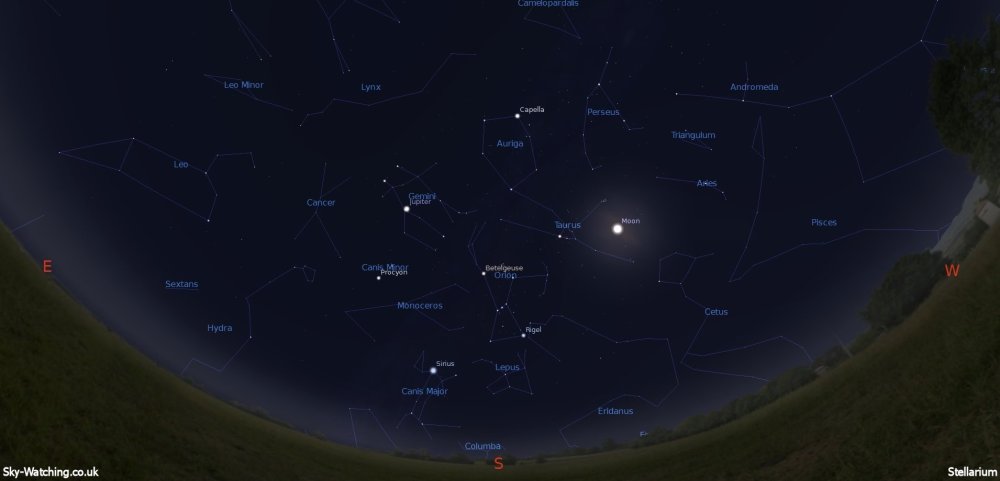
Tuesday 17th December – The Full Moon in the sky this morning is also sometimes known as the Christmas Moon, Bitter Moon, Cold Moon or Oak Moon
Thursday 19th December – Today the Moon is at Apogee at a distance of 406,265 km (252,441 miles), the farthest point out in its orbit around the Earth
Friday 20th December – Ringed planet Saturn (which was in conjunction with the Sun in early November) is visible in the south-eastern sky before sunrise during December, in the middle of the constellation Libra
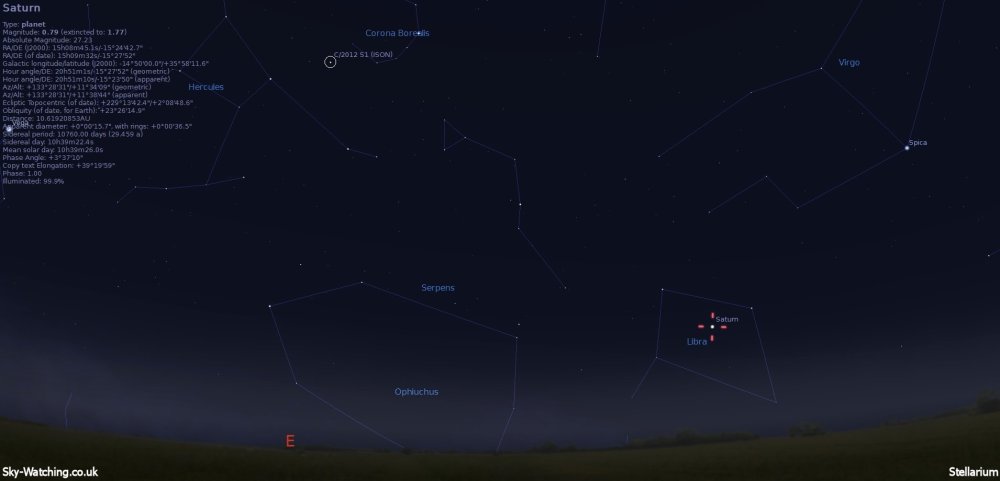
By the new year the planet is rising four hours before the Sun
We’ve only imaged Saturn once properly before with a CCD camera (and the seeing conditions were not ideal) so we’d love another crack at this beauty!
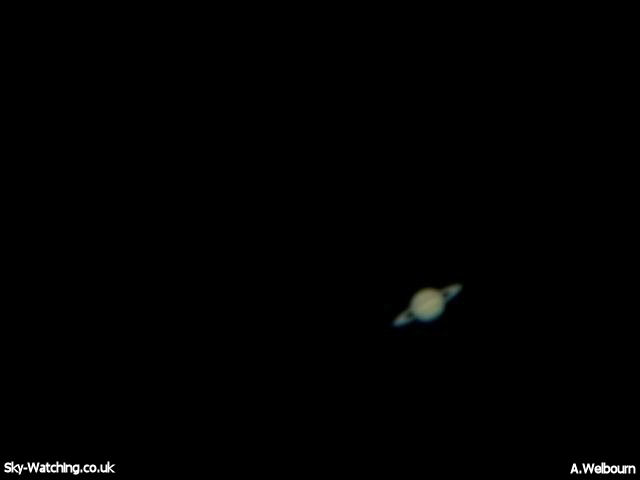
Saturday 21st December – Today is Winter Solstice in the Northern Hemisphere
Wednesday 25th December – The Moon appears at Last Quarter phase today
Sunday 29th December – Inner planet Mercury is in Superior Conjunction with the Sun, having been too close for observation since the first week of the month
If you’re up early this morning Saturn makes a very close appearance near to the waning crescent Moon. A great target for binoculars, a telescope or cameras with a good zoom!
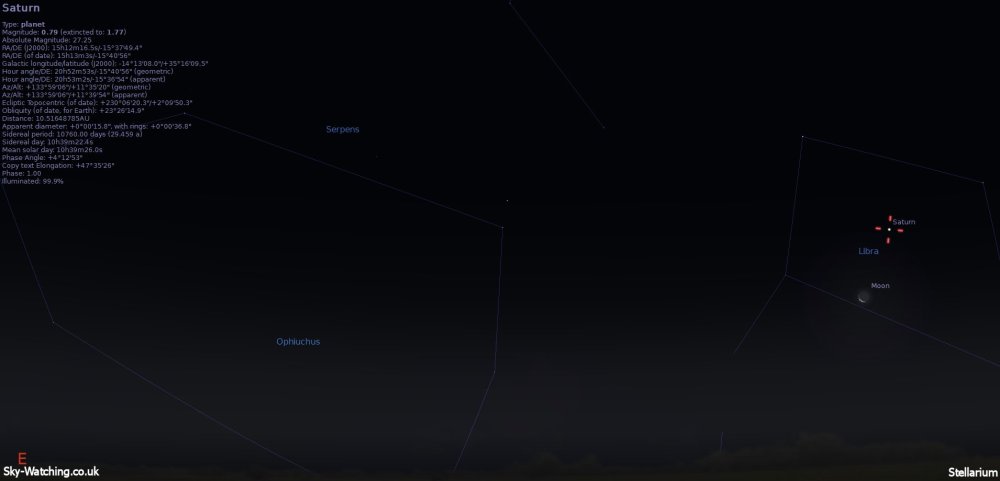
Gas giant Jupiter is very bright in the evening sky for the whole of the month, its location shown below later in the evening on the 29th at 21:00 UTC

We’re hoping to point the CCD camera at it again soon as we’d love to improve on our current best image! Though our DSLR camera caught not only Jupiter and its visible bands, but four of its moons as well
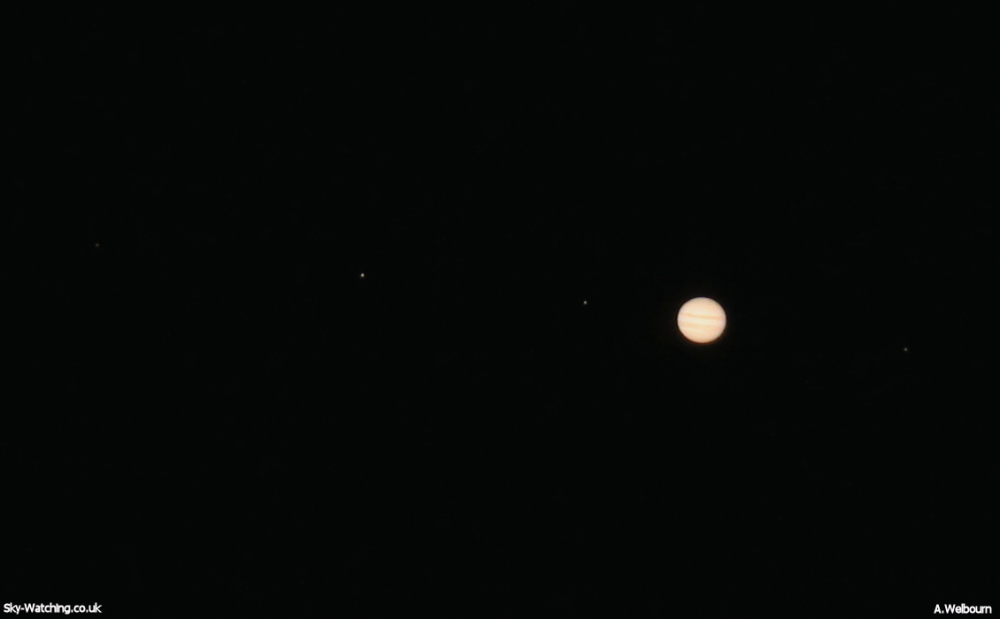
As usual, if you take any photos throughout December you’d like to show us, please tweet them to us using the link below! We’d love to see your efforts!
Planets visible this month:
Jupiter
Venus
Neptune
Uranus
Mars
Mercury
Saturn
Remember, it can take your eyes up to 20 minutes to become properly dark adapted, and anything up to an hour for a telescope to reach ambient temperature outside (to ensure the best image), so give yourself plenty of time to get set up!
To make it easier to find this list of astronomical happenings you can also locate it in the “Monthly Guide” section in the menu bar to the right. Handy! 🙂
Guide images created with Stellarium
Archive:
Astronomy Events – November 2013
Astronomy Events – October 2013
Astronomy Events – September 2013
Reblogged this on MissBlue Blog.
LikeLike
You are a wealth of information! Thank you for sharing…I’m trying to absorb all this scientific info. Amazing photos too.
LikeLike
Reblogged this on Point4CounterPoint.
LikeLike
Woah!!! That’s awesome dude!!! Can’t wait to explore more with my new binoculars and you new information!!!!! 😀
LikeLike